This is an article about a type of insulin pump cannula you might not be familiar with yet. The Orbit sets are made by Ypsomed, and are available in a range of formats:
- Orbit soft, teflon 90˚, tubing with Ypsopump connector
- Orbit soft, teflon 90˚, tubing with luer-lock connector
- Orbit micro, steel 90˚, tubing with Ypsopump connector
- Orbit micro, steel 90˚, tubing with luer-lock connector
- Soft Release O, an Orbit soft with DANA pump connector
- Cellnovo steel and teflon cannulae
When you might encounter the Orbit sets
At the moment the Orbit sets are essentially the only infusion set options for the Cellnovo, Ypsopump, and DANA R/RS pumps. This may change over time, but at the moment learning to use these sets is part of learning to use those pumps.
Some information about the sets is available at Ypsomed’s MyLife site.
What are the differences between them?
All these infusion sets are compatible: the connection between the tubing and the cannula is the same. The tubing connection to the cannula can rotate more than 360˚ without interrupting the insulin flow, which is obviously where the Orbit gets its name.
The major differences are:
- steel vs teflon cannula
- pump connector
The steel version has a 31G needle, of either 5.5 or 8.5 mm length. This is the thinnest and most-flexible steel cannula on the market. The teflon version has 6 and 9 mm versions, and like most teflon cannulae it uses a 27G introducer needle. For a discussion of cannula thicknesses, see my earlier article about cannulae and infusion sets.
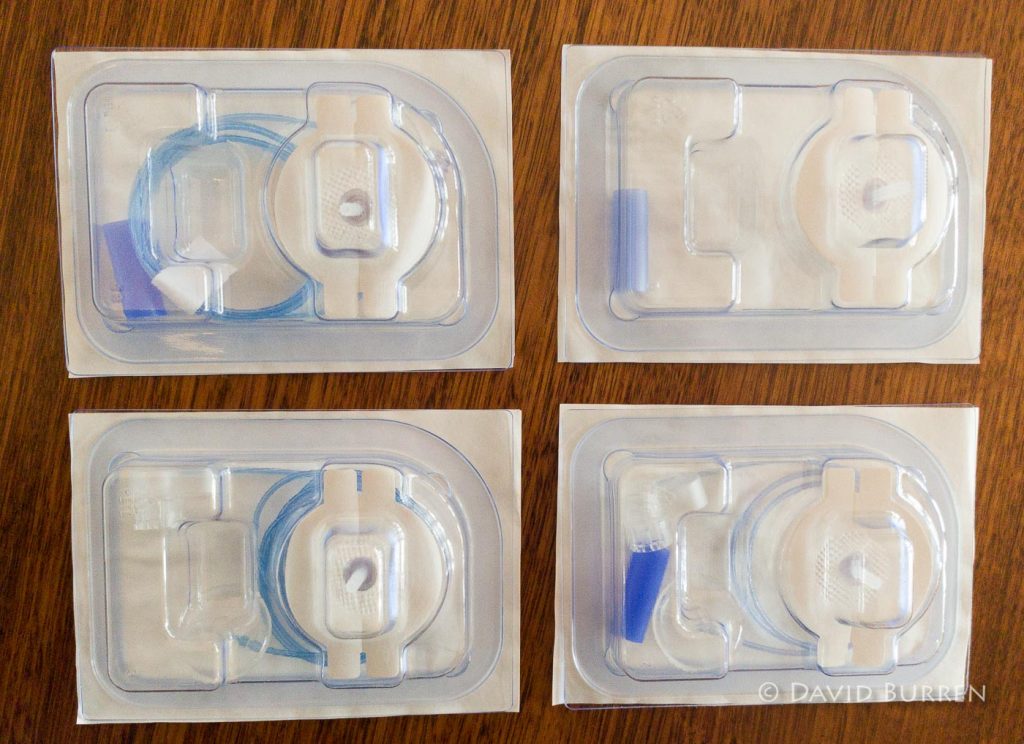
 Apart from that they really are all the same. Even the brochures in the box are the same, with just the logos different on the front cover.
Apart from that they really are all the same. Even the brochures in the box are the same, with just the logos different on the front cover.
The boxes have slightly different printing, but that’s it. The Cellnovo boxes are labelled Orbit soft/micro (as appropriate) and not as “Cellnovo” in any particular way.
Not all are on NDSS
In Australia the ones that are currently available through NDSS are the teflon options for the Ypsopump, DANA, and Cellnovo pumps, and the steel options for the Cellnovo and Ypsopump. I’m told that SOOIL will be introducing a steel version of their Soft Release O set (essentially an Orbit micro with the DANA connector) in the future.
The Orbit sets with luer-lock connectors are unfortunately not currently on the NDSS Insulin Pump Consumables list, although they have apparently been used in some Australian trials. Ypsomed provided me with some samples while I was in Europe earlier this year and I have been able to use them with my Combo pump. Because I’m currently using one tubing set for each reservoir (for 6 days, with several cannulae over that time) I’m mixing them with boxes of Ypsopump/DANA/Cellnovo cannulae to make the luer-lock tubing last me as many months as possible so I can experiment. The luer-lock tubing is usable on the Combo, the Tandem t:slim X2 with the current reservoirs, and the Animas Vibe. Hopefully they do become available in Australia.
I’ve also used these cannulae with my DANA R and a Ypsopump. The only one I haven’t personally used yet is the Cellnovo pump. Using these Orbit sets, several times while experimenting I’ve been able to swap between pumps without needing a new cannula insertion.
Blue tubing
The tubing on all these infusion sets is blue, which sets them apart from all the other sets on the market. This does make it easier to see any bubbles in the line. It’s rare for me to have bubbles develop in my lines or reservoirs (I’ve been pumping since 2010 and I’ve used almost all available set types) but it definitely makes it easy to see where the insulin is up to while priming the tubing.
With the clear tubing of other sets, I often need to hold it stretched out against a bright background (e.g. sometimes I set my computer or phone screen to white) to see the insulin/air boundary move during the initial priming of the line. With the blue tubing I can usually do it without this even in a fairly dark room.
Inserters
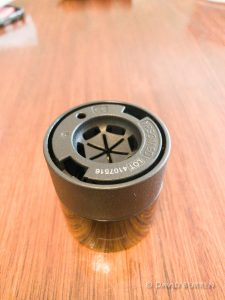 These cannulae are designed so you can insert them by hand. But I much prefer to use an inserter. These push the needle down in a quick motion, and then you lift the inserter away with no risk of pulling the adhesive away from your skin. I highly recommend the use of an inserter, although in an emergency you can fall back to inserting manually.
These cannulae are designed so you can insert them by hand. But I much prefer to use an inserter. These push the needle down in a quick motion, and then you lift the inserter away with no risk of pulling the adhesive away from your skin. I highly recommend the use of an inserter, although in an emergency you can fall back to inserting manually.
The black Cellnovo and Ypsopump versions only differ in the branding on the central button (“Cellnovo” or “MyLife”). This small black cylinder is nicely-engineered.
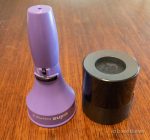
 In contrast SOOIL make their own purple inserter for the Soft Release O sets, although it can be used with the other cannulae. It is a simpler and I would say more-primitive design, but it works OK. I found it a bit tricker to remove the tape and needle cover though, and it seems to apply the cannula with a bit more of a “thunk”. I much prefer the Ypsomed inserter!
In contrast SOOIL make their own purple inserter for the Soft Release O sets, although it can be used with the other cannulae. It is a simpler and I would say more-primitive design, but it works OK. I found it a bit tricker to remove the tape and needle cover though, and it seems to apply the cannula with a bit more of a “thunk”. I much prefer the Ypsomed inserter!
Insertion process
Using the Ypsomed inserter, when I apply one of the Orbit soft teflon cannulae, the general sensation is similar to an Inset II/Mio cannula. I usually don’t feel any pain, but I can sometimes feel a slight sensation of the insertion.
But when I apply an Orbit micro using the inserter, all I feel is the slight “thump” as it lands on my skin. I simply do not feel the needle at all! This was mind-blowing to me when I first experienced it.
If you were inserting manually you would hold the central “fin” on the back of the cannula and just push down to the skin in one fast motion.
Heat-activated adhesive
Another difference with the Orbit sets is the adhesive. For a start it’s “flesh”-coloured instead of the white we see on other sets.
Like many tapes we use to hold down things like CGM sensors, the adhesive on the Orbit sets is heat-activated. I get best adhesion by rubbing the tape onto my skin (the friction helps warm it). If I’m applying after a shower I need to wait a little while so my skin is fully dry before application (not only would moisture get in the way, but any evaporation cools the skin slightly). I use these same techniques successfully with other tapes including RockTape.
Connecting the cannula
Once the cannula is in place, and the tubing is attached to the pump and primed (so drops of insulin appear at the end) you can attach the dome connection to the cannula.
The instructions say to simply push down until it clicks into place, but I usually hook a fingernail under the disc platform and push down against that so I’m not pushing the cannula into my body. Especially with the steel versions.
There should be two clicks: one from each side of the dome. To remove it simply squeeze the sides of the dome and it will lift away from the cannula.
It orks well for me, but I have heard from some users with dexterity issues, who have had some difficult with this connection. If you’re looking to use the Orbit sets you might need to test this for yourself.
Fill amounts
Unlike the steel Sure-T/Contact Detach infusion sets from Medtronic/Unomedical (which are filled and then inserted with the tubing already attached) even the steel Orbit micro cannula needs to be filled with insulin after the first time you connect the pump.
| Cannula | Fill amount |
|---|---|
| Orbit soft 6 mm | 0.3 U |
| Orbit soft 9 mm | 0.4 U |
| Orbit micro (5.5 or 8.5 mm) | 0.2 U |
Teflon specifics
The teflon tube is a little stiffer than that of other 90˚ cannulae such as the Inset II, FlexLink, or Cleo sets. You can feel with your fingers when manipulating a bare cannula (not in your body) but I haven’t found it to be a significant difference when in use.
 One effect of the teflon cannula which I haven’t seen with other sites is a “suction” effect. Because of the shape of the underside of the disc platform, the skin tends to push up around the cannula tube, and after removing the set there’s sometimes a tiny raised lump. It soon subsides and disappears, but sometimes (especially initially) appears like a tiny red sore. It’s noticeable after a site change, but it hasn’t been a problem for me.
One effect of the teflon cannula which I haven’t seen with other sites is a “suction” effect. Because of the shape of the underside of the disc platform, the skin tends to push up around the cannula tube, and after removing the set there’s sometimes a tiny raised lump. It soon subsides and disappears, but sometimes (especially initially) appears like a tiny red sore. It’s noticeable after a site change, but it hasn’t been a problem for me.
Class-leading steel cannula?
For years I’ve mostly used teflon cannulae. After an initial experiment with the Orbit micro, the very fine steel cannula surprised me and made me enthusiastic about this as an option! I’ve since bought another box that I’m working through.
It’s almost not noticeable when being used, and the insertion is subtly less intrusive than the Orbit soft. However it did catch me out a couple of times. Once I had the cannula installed around on my hip (in “love handle” territory) and everything was going fine until I happened to be carrying a large box of tools and happened to rest it on my hip. Pressing down on a steel cannula so the needle pressed further into you can definitely be noticeable! I didn’t make that particular mistake again.
Low-profile?
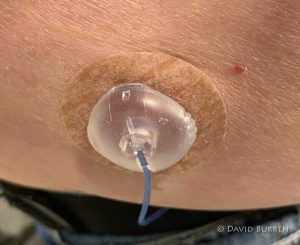 The rounded dome that covers the cannula has a slightly higher profile than other infusion sets such as the Inset II, Mio, Silhouette/TenderLink, etc. It is quite smooth, and I haven’t found any issue with it catching on clothes, but the extra height has affected where on my abdomen I prefer to place them.
The rounded dome that covers the cannula has a slightly higher profile than other infusion sets such as the Inset II, Mio, Silhouette/TenderLink, etc. It is quite smooth, and I haven’t found any issue with it catching on clothes, but the extra height has affected where on my abdomen I prefer to place them.
Consider where your arms often rest on your body. In my case if I am using my laptop actually on my lap, the inside of my elbows and forearms rests against my body. If that’s a location that happens to have an Orbit cannula being pressed on by my arm, it can be distracting. And if it’s an Orbit micro, pressing the needle into me can twinge a bit. But I quickly found slight changes in position for the next cannula that meant this issue was avoided.
Similarly a car seatbelt pressing down onto an Orbit micro site can be uncomfortable. When I’ve ended up in that situation, until the cannula is due for replacement I can pad the seatbelt with something like a polarfleece or jumper to avoid the discomfort.
Occlusions?
I haven’t experienced any occlusion alarms (or site effectiveness problems) with these sets on the Combo, DANA R, or Ypsopump. I’ve heard reports from some users of issues with this, but haven’t experienced it myself.
History
Some users are just coming across the Orbit sets recently, despite pumping for years. But they’ve been around for some time. It seems the luer-lock version of the Orbit was the original, back when the Orbit was produced in the USA by ICU Medical. Here’s their promotional video from at least as far back as 2011.
At some point it seems the product was acquired by Ypsomed, and is now produced in Mexico, Switzerland, and Germany.
Conclusion
Overall I would say this is a quite effective 90˚ cannula. If the pump I wanted to use only supported these sets I wouldn’t find that a problem. They haven’t entirely supplanted my usual cannula choices (a mixture of Cleo 90 and TenderLink) but I’m still mixing things up and using Orbit sets some of the time (by choice).
Disclaimer
I wrote this article as an introduction/description. It’s certainly not meant as a promotion, and has not been written at the request of any maufacturer. I needed to explore the Orbit sets due to my interest in both the DANA and Ypsopump pumps. Note that the only support provided by Ypsomed was some luer-lock versions which allow me to connect them to my main Combo pump, although there was no expectation that (or what) I would write about them. All the other ones I’ve used have been entirely self-funded.
Neither is this article intended to be a detailed and comprehensive review of the Orbit sets. But I’ve tried to present what I see as both the advantages and the flaws of this cannula. Hopefully it gives you some idea of what to expect, but we always each find our own set of details about any product like this. Like all my writing, I do hope this information is useful to you!


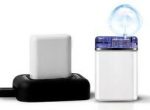
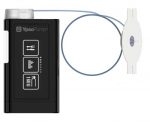




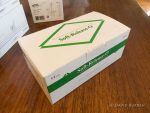
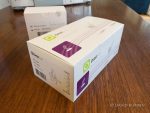
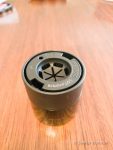


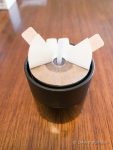


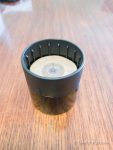
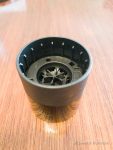
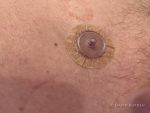

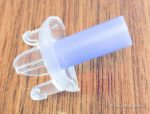
I use the ypsopump and the canulas are one of my favourite things. They don’t do so well when you forget the inserter but the swivel means you have less pulls on the site. Also I find the tape and steel very good on my skin. I have used Cleo and insert II for some time. If the pump came with and inbuilt bolus calculator or was compatible with spike I would be in dreamland!
That’s the thing that always bothers me. One key criteria for TGA approval should be choice. Or should we be enabling proprietary systems where the choice between one pump excludes significant features or compatibility with specific infusion sets? Who really wants to live with an itchy site for days just to use a specific pump.